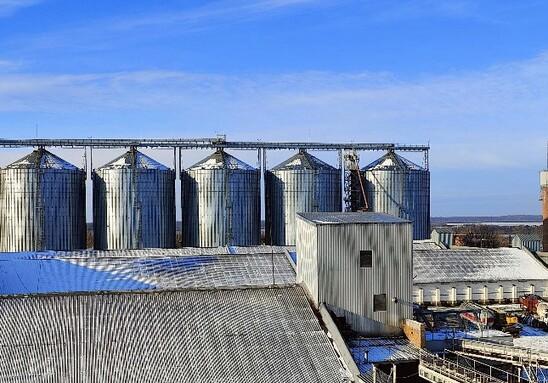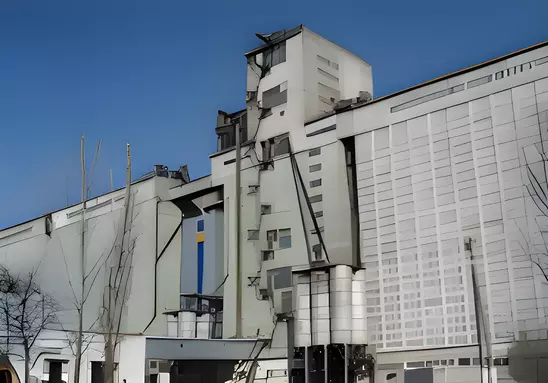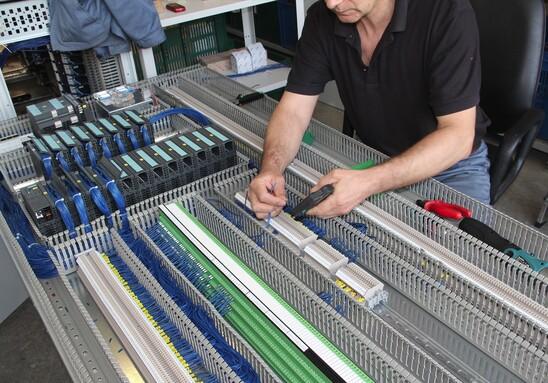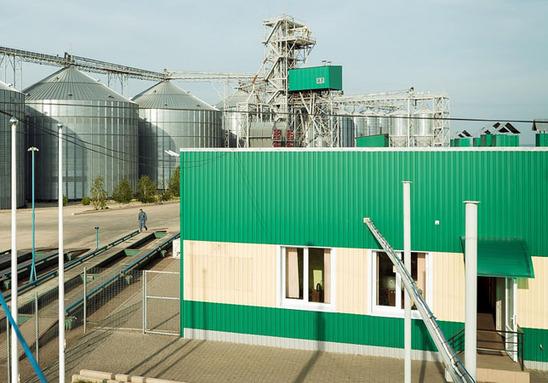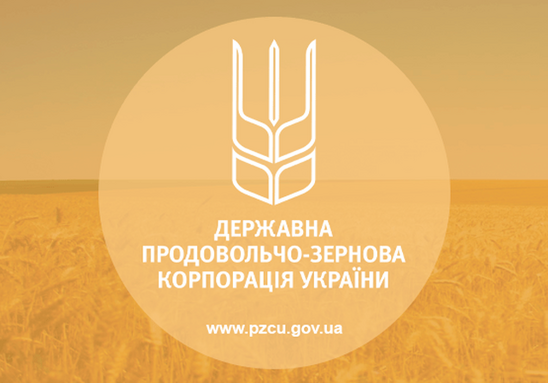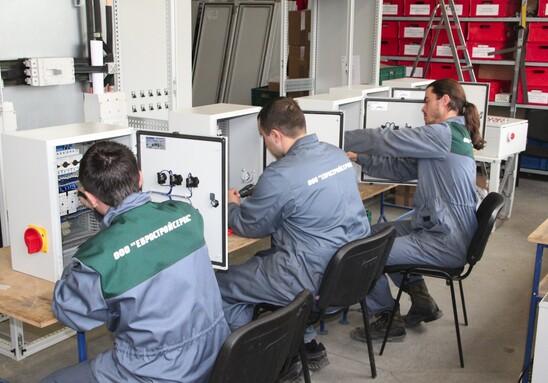Comprehensive automation of the grain storage Ukrmill LLC

Development, production and implementation of a remote automated elevator control system (RSAU). Ukrmill Company LLC has existed since 2007. Since 2009, the controlling stake has been transferred to Glencore International AG. The Swiss company Glencore International AG is one of the world's largest traders in the raw materials market. The company is one of the main players in the global grain and sugar market. In Ukraine, it leases a total of 80 thousand hectares of agricultural land in the Kyiv, Vinnitsa and Odessa regions, and owns an oil extraction plant with a capacity of 250 thousand tons. in a year.
Remote automated control system
Customer's situation:
By 2009, the simultaneous storage capacity of the port elevator in the Ilyichevsk seaport, owned by Ukrmill Company LLC, amounted to 120 thousand tons. The growth of market demand for grain transshipment services required an increase in the capacity of the elevator and a complete modernization of the remote automated control system for it.
The development of the modernization concept and the search for technical solutions was entrusted to the department of the chief power engineer and the department of the chief metrologist. During the work, it became clear that internal resources were not enough to implement a project of this scale. Therefore, it was decided to involve specialized companies in this work.
The process of selecting a work contractor:
The chief meteorologist of Ukrmill Company LLC was asked to request the provision of their proposals for the implementation of this project to a number of companies involved in the automation of technological processes. GC "Grain Capital'', having positive experience in implementing similar projects in the grain processing industry, received an advantage in choosing a contractor.
Criteria for the final selection of the work contractor:
The final decision to select a contractor was based on the following:
- GC "Grain Capital" has positive experience in designing, manufacturing and implementing large-scale projects.
- GC "Grain Capital" has a powerful production base.
- GC "Grain Capital" cooperates with specialists from the Odessa National Academy of Food Technologies.
- GC "Grain Capital" was able to put forward an offer with the best price-quality ratio.
Project description:
Due to the fact that the project was initially developed by employees of Ukrmill Company LLC under the guidance of technical specialists from several non-specialized companies, a unified strategy and technical solutions for implementing the task were never developed. Having started work on this project, Eurobudservice LLC first of all developed a technological map for the work.
Pre-project preparation:
Meetings were organized with the management team of Ukrmilla Company LLC to clarify the situation about the current state of work progress. Based on the results of the meetings, the main problems that required solutions to optimize the progress of work were identified:
- The technological scheme initially proposed for the construction of a new elevator did not meet modern requirements.
- The fundamental technical solutions underlying the project are obsolete.
- The choice of equipment on which the control system was supposed to be built did not meet the optimal price-quality criteria.
Based on this, together with specialists from the Grain Capital Group of Companies, it was decided:
- View the technological diagram of the transport flows of the elevator under construction in order to optimize and bring them in line with modern trends.
- Review of fundamental electrical solutions to minimize energy costs, product loss and increase the level of safe operation of equipment and personnel.
- In order to unify the equipment used and improve the quality of service, create a control system based on the equipment used for the first stage of the elevator.
- Ensure coordination of all work carried out within the framework of this project with all responsible persons interested in the further operation of the complex under construction.
- Involve all heads of structural divisions of Ukrmill Company LLC in the development process.
- The complex of works was divided into stages: the formation of technical specifications and design.
Practical results of implementation:
As a result of the work carried out by Eurobudservice LLC on the development, production and implementation of a remote automated control system for the elevator of Ukrmill Company LLC:
- Reduction of implementation time in relation to similar systems due to the use of distributed input-output systems by 1.5-1.7 times.
- Reducing the cost of cable and wire products through the use of distributed input/output systems by up to 30%.
- Reducing the cost of the cable system by reducing the number of cable products by up to 18%.
- Reducing the volume of construction financing by reducing implementation time and reducing the cost of automation and electric power control equipment by up to 21%.
- Reducing training time for SDAU operators due to the versatility of the interface used to 4-7 days.
- Reducing energy costs for moving a unit of product due to algorithmic optimization of grain transportation routes from 10 to 12%.
- Increased productivity of transport flows due to algorithmic optimization of grain transportation routes by up to 20%.
- Reducing maintenance costs through the use of highly reliable electrical power and software control equipment produced by the world's leading manufacturers from 8 to 17%.
- Automation of the weighing system
Project implementation timeframe:
July 2010
Project description:
- Install equipment that meets modern metrological requirements.
- Automation of the accounting system.
- Integration of hopper scales into the technological scheme.
Scope of work:
- Development of design documentation for an automatic weighing system.
- Complete set of controls.
- Development of algorithmic support.
- Software development.
- Manufacturing, commissioning and installation of automation equipment.
Technical means:
- Hopper scales ZEO-VBE-4/1200.
- Hydraulic station CTR0-0030 "Duplomatic Hydraulics".
- Hydraulic cylinders "ATOS".
- Load cell HBM RSCC C3/5T.
- Electronic weighing device HBM WE2108.
- Microcontroller FASWEL RTU-180.
The core of the measuring system is the WE 2108M measuring controller with an indicator, which receives information from the strain gauge and is converted into a digital signal.
The weight value is transmitted via the RS 232 interface to the control controller to perform operations on discrete weighing of portions, batches, weighed product, and to the serial interface for further use on a PC
Weighing is carried out on serial weighing bunker equipment developed by Elevator Equipment Plant LLC equipped with hydraulically driven valves.
The RTU-180 microcontroller, according to the algorithm, generates control signals that, with the help of a hydraulic station, influence the latch cylinders above the weighing and weighing bins of the scales.
The measuring controller has a settings menu, which displays all the necessary information about the state of the scales and allows calibration and calibration.
The system software is implemented in 2 parts and consists of a low-level program executed in the FASTWEL controller and a high-level program that runs on a PC in the CPU room.
The lower level program performs the following functions:
- cyclic polling of the status of the WE 2108 weighing terminal (every 200 ms);
- cyclic polling of the status of discrete latch position sensors;
- cyclic polling of the status of discrete level sensors in bins;
- cyclic polling of the status of the “Request for readiness” and “Unloading scales” signals generated by the SDAU system;
- generates a “Ready” response signal for the SDAU system;
- maintains a total (total) counter based on weighing results, stored in non-volatile memory;
- responds to upper-level requests for discrete signals and total counter status.
The top-level program performs the following functions:
- cyclic polling of the state of the weighing system (every 500 ms);
- visualization of scale operation;
- records information about completed shipments into the database;
- allows you to set the weighing mass, which is transmitted to the controller and stored in the non-volatile memory of the controller;
- records weighing mass data and sensor status in exchange files (for data transfer to the SDAU system).
The delivery includes an automated workstation for the scale operator (Workstation “Weigh Elevator”), which maintains the corresponding database and processes information on the accounting tasks of grain receiving and grain processing enterprises.
The software meets all the requirements of State standards for operations, including export-import, which are carried out with grain and its processed products.
Implementation result:
Thanks to the implementation of this project, hopper scales:
- integrated into the remote automated control system of the warehouse complex;
- The product shipment report is integrated into your existing accounting application.
- Grain temperature control system
Project implementation timeframe:
February 2011
Name of the project:
Grain temperature control system in a horizontal elevator.
Primary goal:
- Reducing the amount of grain consumption caused by the process of self-heating of the grain mass.
- Presentation of information about the presence of foci of self-warming.
- Increasing the level of fire safety.
Scope of work:
- Inspection of the object.
- Development of technical specifications.
- Software development.
- System components.
- System installation.
- Commissioning works.
Technical means:
ESKT-Ts system (digital electronic temperature control system).
Compound:
- Digital thermal suspensions TsTP.
- Information collection blocks BSI-12.
- Interface conversion block TRS232 – RS485 GSA V5.
- Power supply unit BPT-220-24/45.
- Work station.
Exercise:
- Product temperature control in floor warehouses throughout the entire filling volume.
- Generating an alarm when the temperature limit is exceeded.
- Tracking the dynamics of temperature changes.
- Full statistics with the ability to view preliminary measurements.
- Generating reports.
Temperature control is carried out by thermal suspensions of the TsTP type, which are a cable-rope, inside of which, along its entire length, there are DS18B20 digital sensors from Dallas Semiconductor.
The attachment point for the thermal hangers of the central heat exchanger is designed to maximally avoid bending and twisting loads during installation, and also takes into account the properties of the load-bearing structures of the granary, which helps to avoid their destruction in cases where the permissible pulling load on the thermal hangers is exceeded.
Information collection units poll the thermal suspension sensors via the “1-WIRE” interface using the MicroLAN communication protocol. Communication between the information collection units and the workstation is carried out via the RS-485 interface using the MODBUS communication protocol.
The complex is built in such a way as to reduce the number of terminals and other connections to a minimum, increasing reliability.
A PC with the AWP ESKT-Ts software application installed on it is used as a workstation. Possibility provided:
- view the temperature readings of each individual thermal suspension sensor of the maximum temperature in the suspension zone;
- represent the temperature value in the suspension zone in the form of colored fields;
- archive current data;
- present data through graphs of temperature changes in the zone of each sensor;
- prevent grain spoilage by signaling an increase in product temperature in a certain zone using color indication;
- generate reports on exceeding temperature limits.
Implementation result:
The mounted grain temperature monitoring system as part of the floor storage continuously monitors the grain temperature, tracking its changes at any point in the grain mound, archives temperature values without human intervention, reducing the likelihood of errors in measurements, allows you to analyze the collected data using graphs and tabular reports, allowing you to determine trends in temperature growth in grain storage areas, pockets of self-heating at the stage of their formation, saves energy resources spent on regular movement of grain for the purpose of cooling it.
Customer comment
Implementation period:
2011-2014









